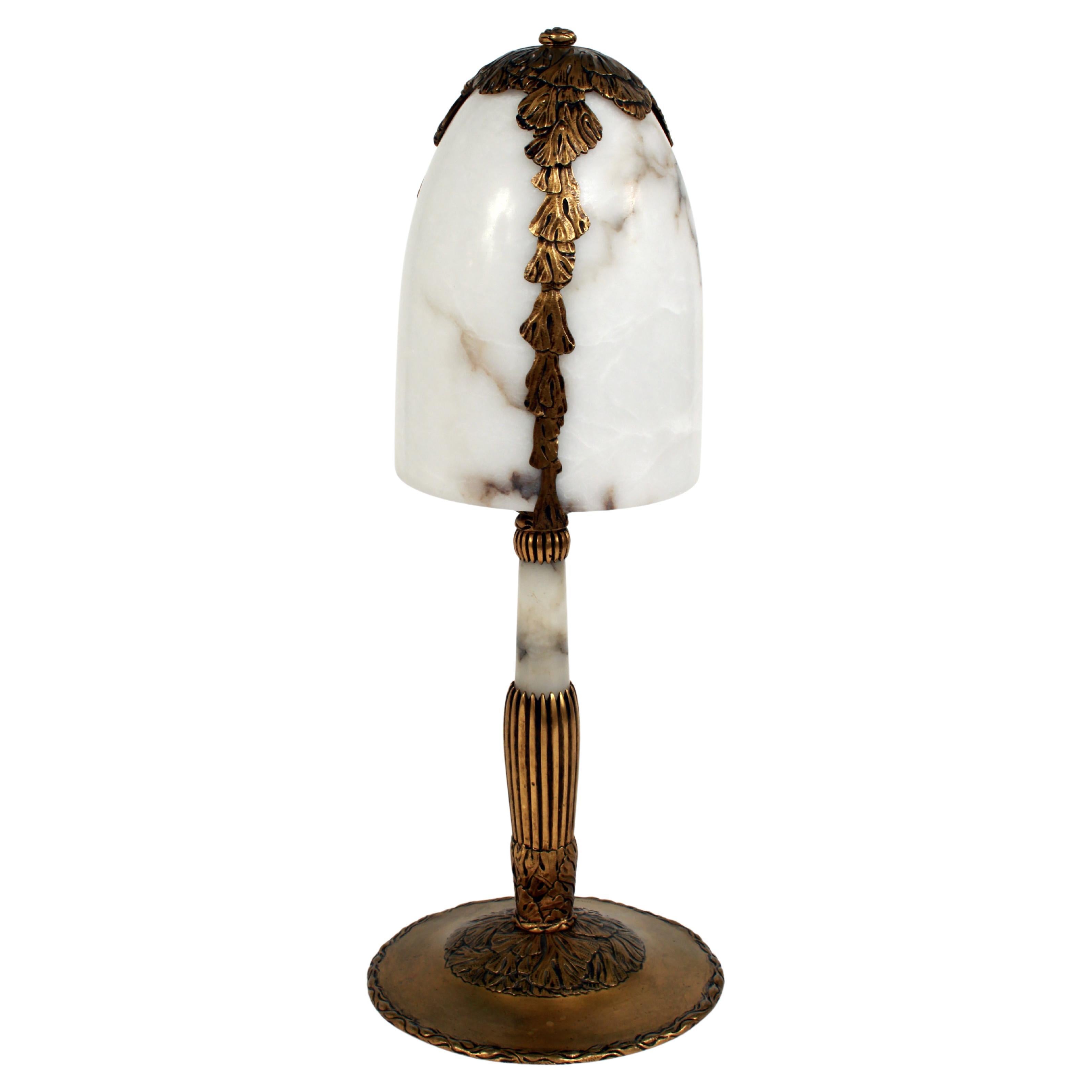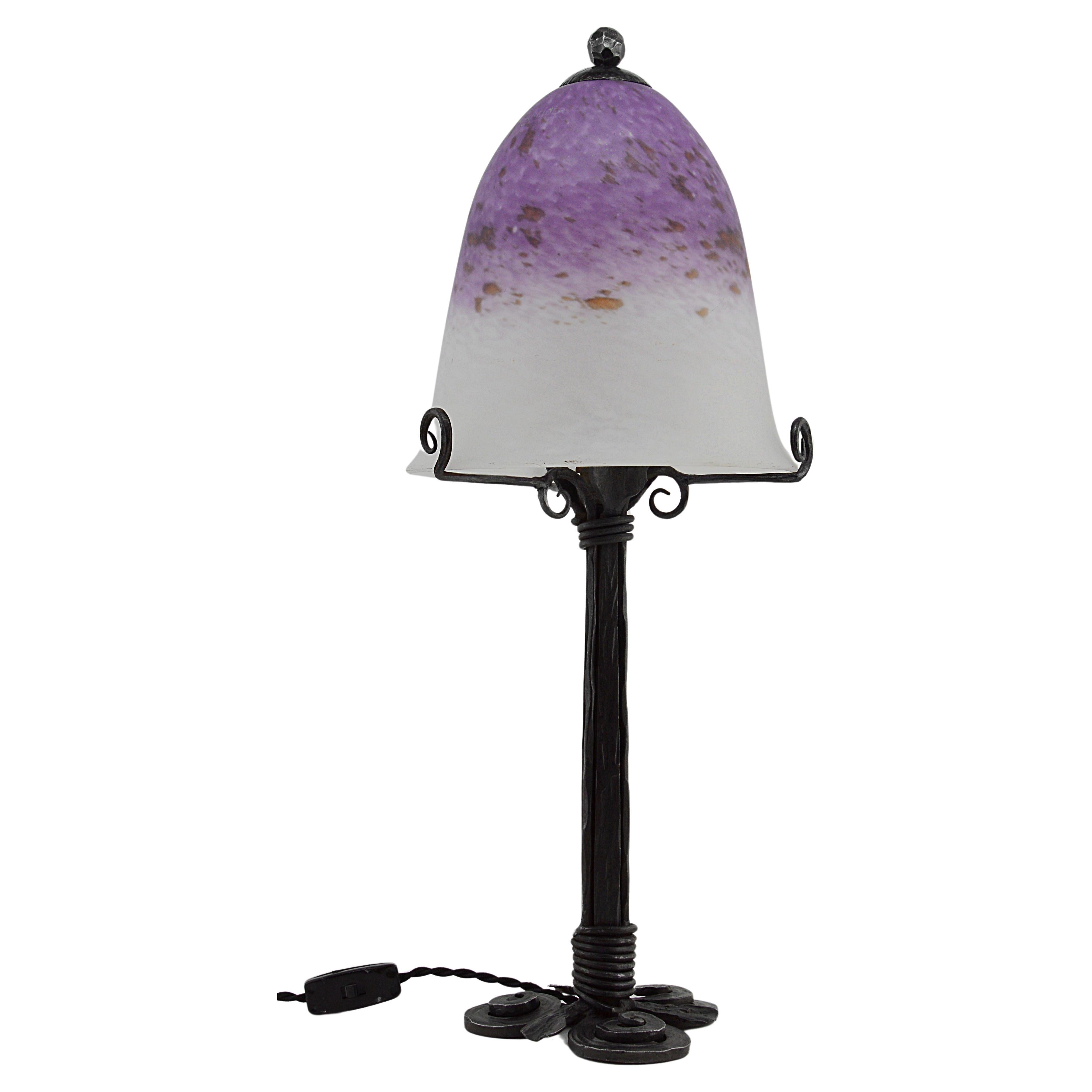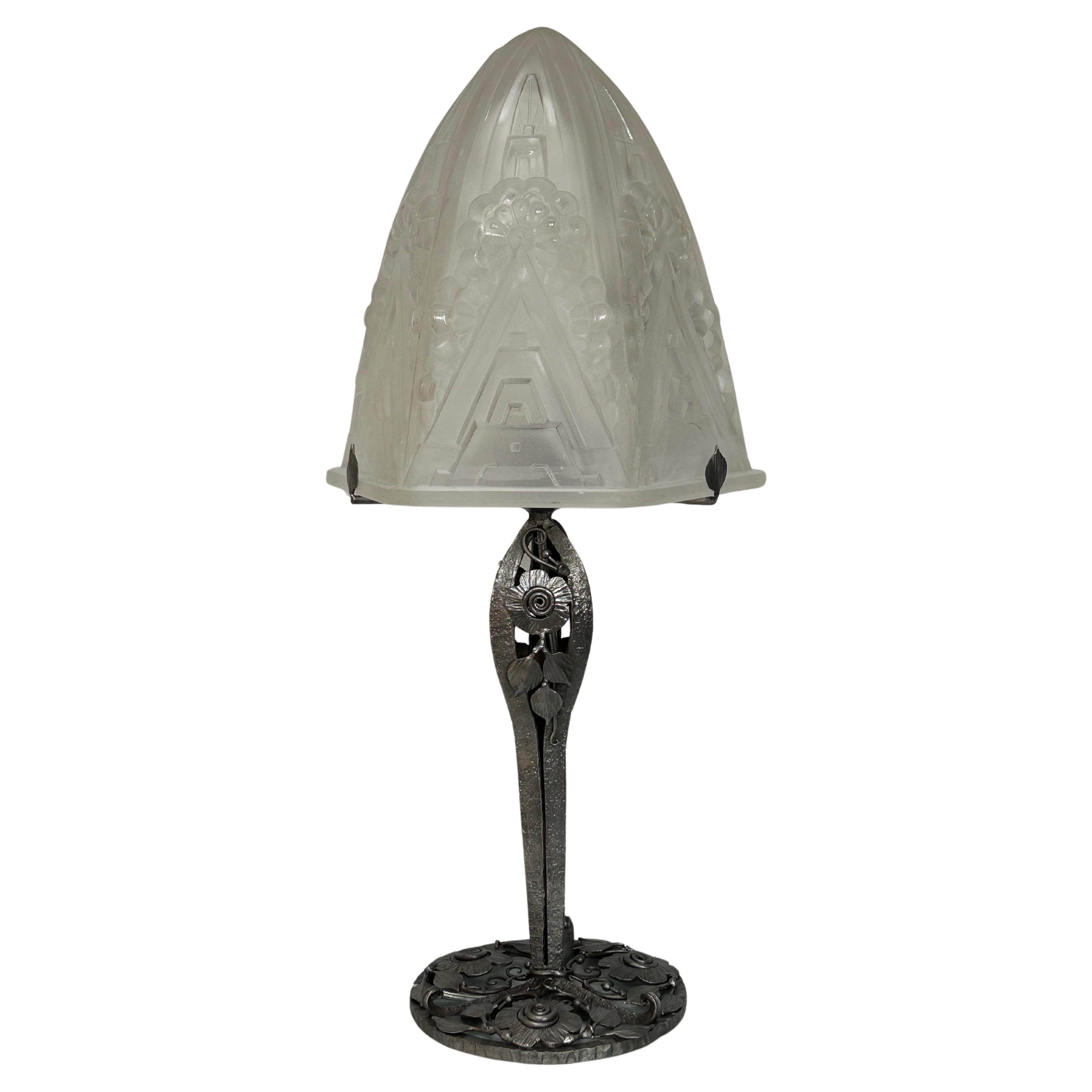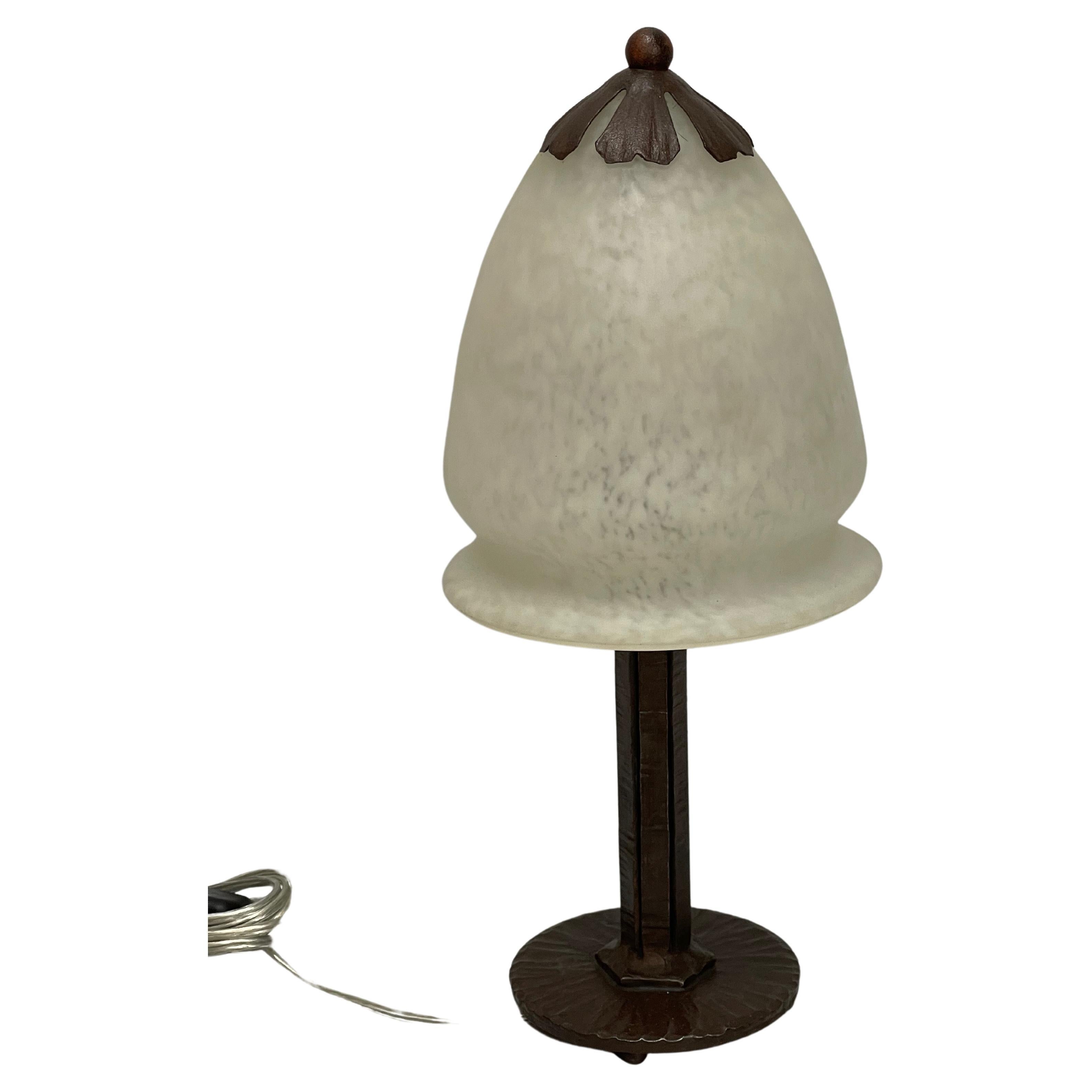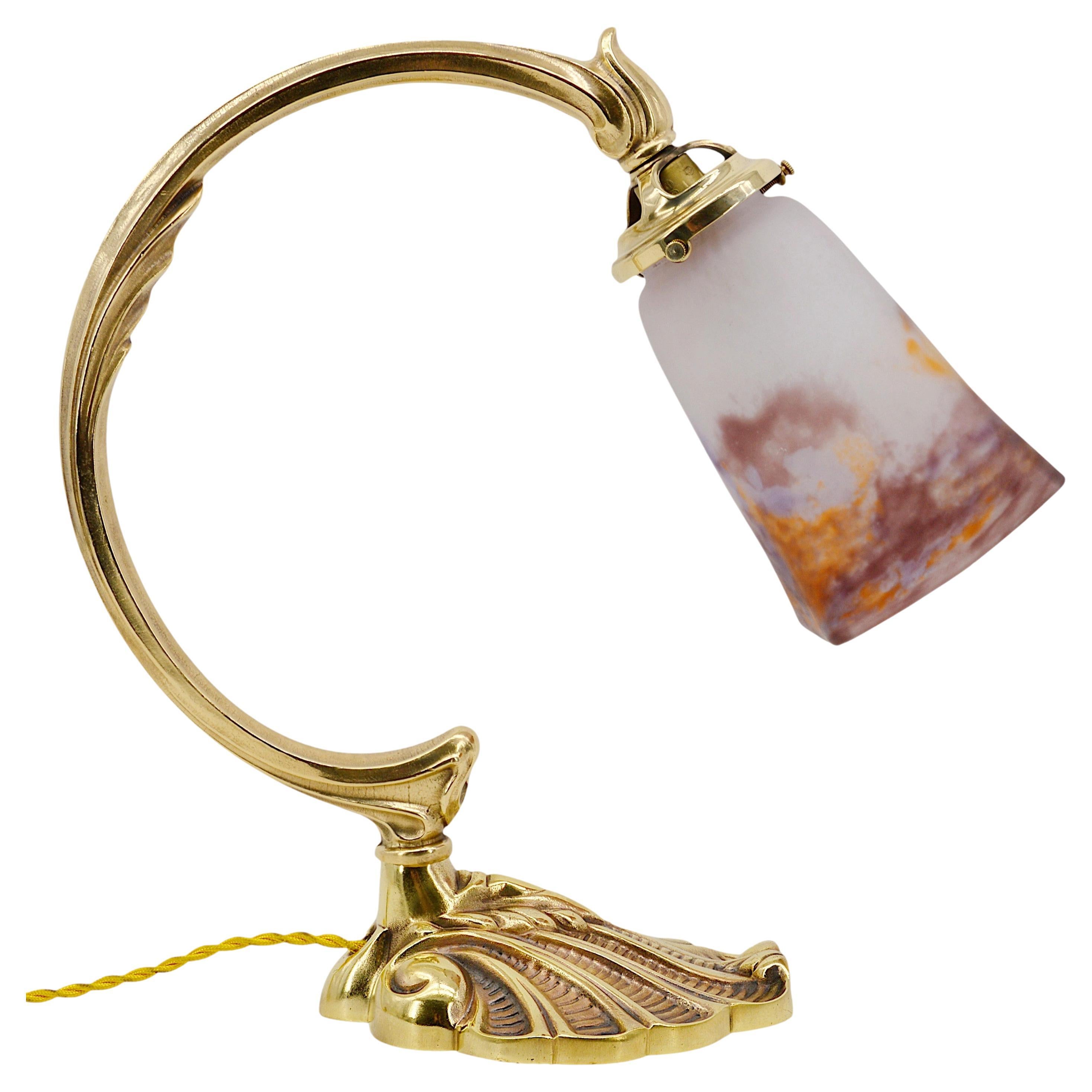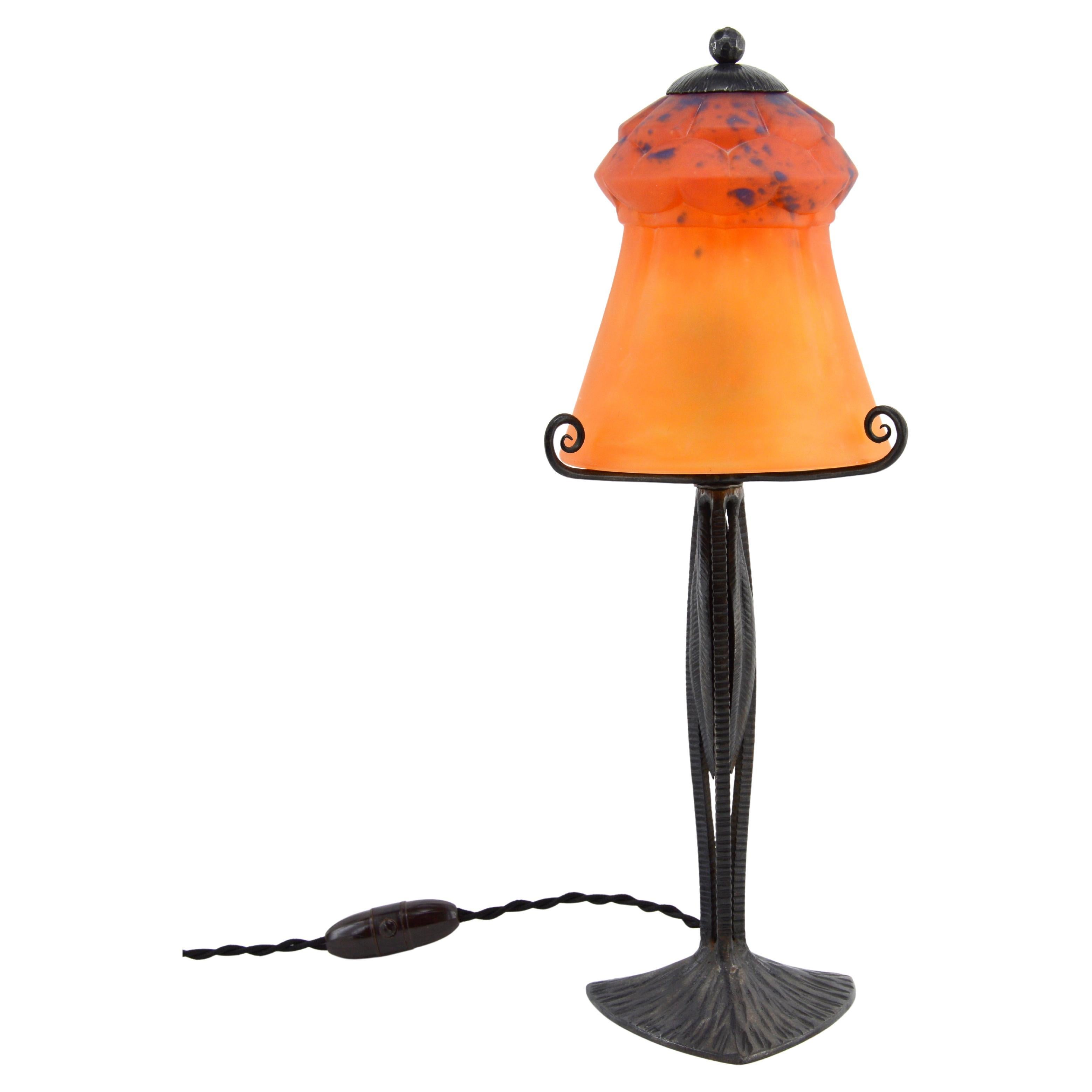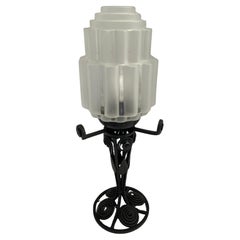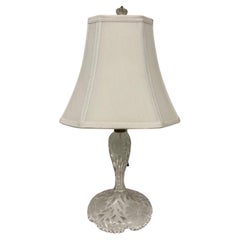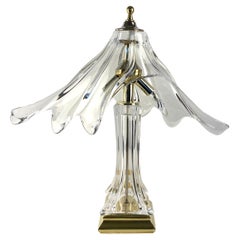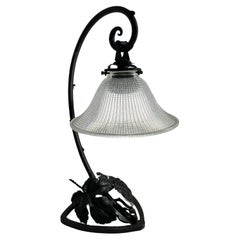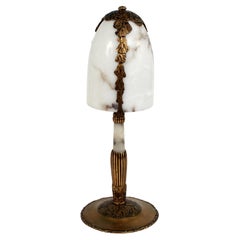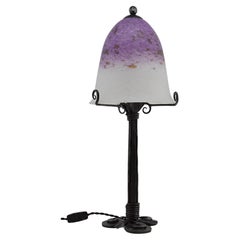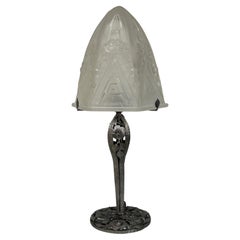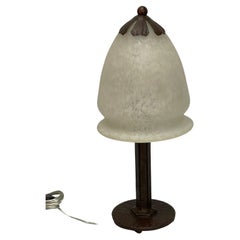Items Similar to Leon Chapelle French Art Deco Table Lamp, Manner Charles Schneider & Voutier
Want more images or videos?
Request additional images or videos from the seller
1 of 12
Leon Chapelle French Art Deco Table Lamp, Manner Charles Schneider & Voutier
$1,650
$2,40031% Off
£1,232.47
£1,792.6931% Off
€1,428.85
€2,078.3331% Off
CA$2,290.98
CA$3,332.3431% Off
A$2,567.90
A$3,735.1231% Off
CHF 1,337.03
CHF 1,944.7731% Off
MX$31,355.13
MX$45,607.4631% Off
NOK 16,975.41
NOK 24,691.5131% Off
SEK 16,091.16
SEK 23,405.3331% Off
DKK 10,660.80
DKK 15,506.6131% Off
Shipping
Retrieving quote...The 1stDibs Promise:
Authenticity Guarantee,
Money-Back Guarantee,
24-Hour Cancellation
About the Item
An authentic and very rare 1920-30 French art deco lamp in hand hammered wrought iron by Léon Chapelle, stamped.
Chapelle was a very famous blacksmith from Nancy, France is well known for his forged iron. A large and very rare 1920-30 French art deco lamp in wrought iron by Léon Chapelle. This famous blacksmith from Nancy France is well known for his forged iron animals. Less known because hardly ever on the market are his vases chandeliers and lamps. Léon Chapelle often made brass details on his iron fixtures like we can find in productions of other Nancy based workshops like Majorelle or Dubois. All these successful descendants of the école de Nancy nowadays make high prices at auction houses.
This highly organic lamp base with metallic patina is a remarkable work.
The lamp is in perfect condition, equally the pate de verre shade without any chips, with some air bubbles inherent in the manufacturing processes of that time. No chips or cracks to the glass only minor signs of age appropriate wear.
Recently rewired with new cloth covered twisted cord and is equipped with E14 socket that can hold any LED bulb appropriate for select destination standards. For use the USA a 2 pronged plug is necessary, for EU wiring is included.
- Creator:Leon Chapelle (Designer)
- Dimensions:Height: 16.75 in (42.55 cm)Diameter: 6 in (15.24 cm)
- Style:Art Deco (Of the Period)
- Materials and Techniques:
- Place of Origin:
- Period:
- Date of Manufacture:1920-1930
- Condition:Wear consistent with age and use. Glass shade shows age appropriate signs of wear, no cracks or chips. Newly rewired. Plug is currently for use in France, easily converts for use in select destination.
- Seller Location:Miami, FL
- Reference Number:1stDibs: LU4082121143162
About the Seller
4.9
Gold Seller
Premium sellers maintaining a 4.3+ rating and 24-hour response times
Established in 2014
1stDibs seller since 2018
564 sales on 1stDibs
Typical response time: 2 hours
- ShippingRetrieving quote...Shipping from: Miami, FL
- Return Policy
Authenticity Guarantee
In the unlikely event there’s an issue with an item’s authenticity, contact us within 1 year for a full refund. DetailsMoney-Back Guarantee
If your item is not as described, is damaged in transit, or does not arrive, contact us within 7 days for a full refund. Details24-Hour Cancellation
You have a 24-hour grace period in which to reconsider your purchase, with no questions asked.Vetted Professional Sellers
Our world-class sellers must adhere to strict standards for service and quality, maintaining the integrity of our listings.Price-Match Guarantee
If you find that a seller listed the same item for a lower price elsewhere, we’ll match it.Trusted Global Delivery
Our best-in-class carrier network provides specialized shipping options worldwide, including custom delivery.More From This Seller
View AllFrench Art Deco Table Lamp, Iron and Glass Art Deco Lamp
Located in Miami, FL
This captivating French Art Deco Table Lamp or Iron and Glass Art Deco Lamp table, circa 1925, showcases the timeless elegance of French Art Deco d...
Category
Early 20th Century French Art Deco Table Lamps
Materials
Iron
French Art Deco Cut Crystal Table Lamp in the Manner of Baccarat
Located in Miami, FL
A fine French Art Deco Crystal Table Lamp cut and etched with intricate details in the manner of Baccarat.
This very good quality antique Fre...
Category
Early 20th Century French Art Deco Table Lamps
Materials
Crystal
Large Cofrac Art Verrier Table Lamp
By Cofrac
Located in Miami, FL
A beautiful and very good quality Art Deco style table lamp in uniquely shaped blown crystal and brass. Cofrac Art Verrier from France. This piece bears the makers mark. Cofrac used labels to identify their pieces which were usually removed by the purchasers for aesthetics, however, the labels were not removed on this vintage lamp. Therefore, this lamp is like new.
Approximate dimensions: 21" High x 21" Wide x 6" Deep
Exceptionally good vintage condition. No chips or cracks. Brass base was recently polished. Lamp is in working order.
This Cofrac Art Verrier Table Lamp...
Category
Mid-20th Century French Mid-Century Modern Table Lamps
Materials
Brass
French Art Deco Forged Iron Table Lamp With Glass Shade
Located in Miami, FL
Illuminate Your Space with a Vintage French Art Deco Table Lamp.
This captivating table lamp, circa 1925, showcases the timeless elegance of French Art Deco design. Hand-forged iron...
Category
20th Century French Art Deco Table Lamps
Materials
Iron
French Art Deco Table Lamp with Pâte de Verre Glass Shade, circa 1920s
Located in Miami, FL
Unveiling a touch of Parisian glamour: This captivating French Art Deco table lamp, handcrafted in France circa 1920s, exudes the elegance of the era. The lamp features a sleek chro...
Category
Early 20th Century French Art Deco Table Lamps
Materials
Chrome
$840 Sale Price
20% Off
Art Deco Style Stained Glass Table Lamp
Located in Miami, FL
Unveil the mystery of this captivating Art Deco style table lamp! This rare design, with its unknown origins, exudes the unmistakable elegance of the era. The lamp has striking fea...
Category
20th Century American Art Deco Table Lamps
Materials
Stained Glass
You May Also Like
Art Deco Table Lamp by Albert Cheuret
By Albert Cheuret
Located in Miami, FL
Fabulous French Art Deco table lamp by Albert Cheuret with an Alabaster Shade, Gilded Bronze shaft and details.
Category
Vintage 1920s French Art Deco Table Lamps
Materials
Alabaster, Bronze
Charles Schneider Large French Art Deco Table Lamp, 1920
By Charles Schneider
Located in Saint-Amans-des-Cots, FR
Large French Art Deco table lamp by Charles Schneider (Epinay-sur-Seine, Paris), France, ca.1920. This blown molded glass shade made by Charles Schneider comes on its wrought iron ba...
Category
Vintage 1920s French Art Deco Table Lamps
Materials
Wrought Iron
Henri Mouynet Art Deco Lamp
By Mouynet Schneider
Located in NANTES, FR
Henri Mouynet Art Deco Lamp
Art deco lamp circa 1930.
Nickel-plated wrought iron foot with floral decoration.
Molded glass shell, geometric and floral decoration.
Attributed to Henr...
Category
Mid-20th Century French Art Deco Table Lamps
Materials
Wrought Iron
Schneider Art Deco Wrought Iron Lamp
By Charles Schneider
Located in NANTES, FR
Art deco lamp around 1930.
Foot in wrought iron, tulip in white glass paste speckled.
Electrified and in perfect condition.
Tulip signed Schneider.
Height : 33 cm
Base diameter ...
Category
Mid-20th Century French Art Deco Table Lamps
Materials
Wrought Iron
Degue French Art Deco Table Lamp, 1920
By Cristallerie de Pantin
Located in Saint-Amans-des-Cots, FR
French Art Deco table lamp by Degue (Compiegne), France, 1920s. Glass and bronze. Mottled glass shade, powders are applied between two layers, hung at its solid bronze base. Height: ...
Category
Vintage 1920s French Art Deco Table Lamps
Materials
Bronze
Charles Schneider and Henri Fournet French Art Deco Table Lamp, 1920
By Charles Schneider
Located in Saint-Amans-des-Cots, FR
French Art Deco table lamp by Charles Schneider (Epinay-sur-Seine, Paris) and Henri Fournet (Lyon), France, 1920s. This large blown molded glass shade made by Charles Schneider comes...
Category
Vintage 1920s French Art Deco Table Lamps
Materials
Wrought Iron
More Ways To Browse
French Antique Furniture Auctions
Lighting Auction
Art Deco Brass Table Lamp French
Antique Table Lamps 1930
French Art Deco Wrought Iron Table Lamp
Lamp Shade Hammered
Antique Wrought Iron Table Lamp
Hammered Brass Table Lamp
French Glass Brass Vase
Antique Blacksmith Forge
Forged Iron Table Lamp
Pate De Verre Lamp
Antique Blacksmith Signs
Pate De Verre Table Lamp
Leon Leon Lighting
Charles Forge
Pate De Verre Glass Shade
Pate De Verre Chandelier
